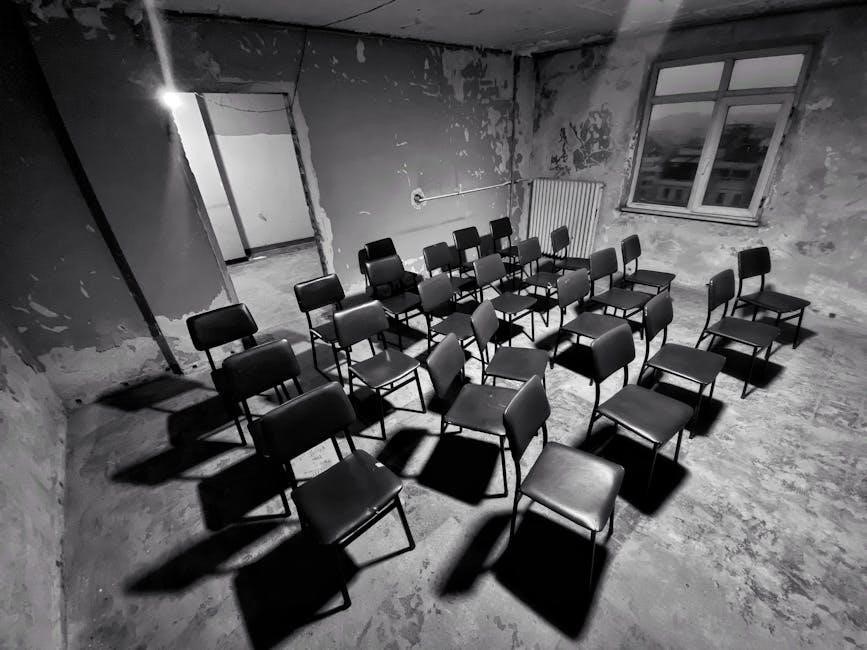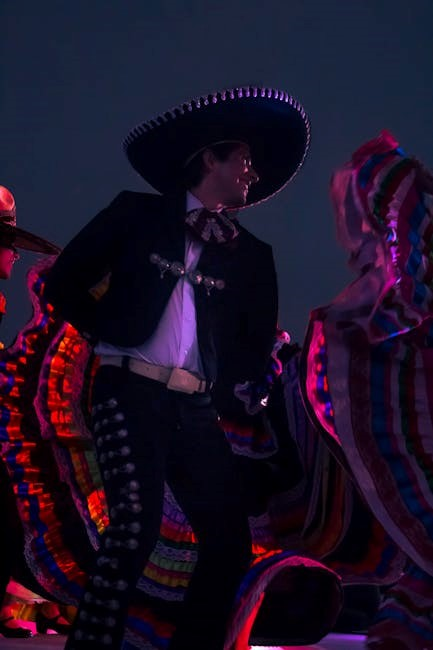Carl Jung’s concept of synchronicity refers to meaningful coincidences that lack a causal connection. A key part of his collected works, it challenges classical causality, offering a new perspective on time, space, and human experience.
Definition and Overview of Synchronicity
Synchronicity, as defined by Carl Jung, refers to the occurrence of two or more events that appear to be meaningfully connected yet lack a causal relationship. This concept challenges the traditional view of causality by introducing the idea of acausal connections, where events are linked by their psychological significance rather than physical cause and effect. Jung emphasized that synchronicity involves the coming together of an inner psychic state and an outer event, suggesting a deeper, universal interconnectedness. He often illustrated this concept with examples from his clinical practice, where patients reported coincidences that held profound personal meaning, such as dreaming of an event that later occurred. Jung also drew parallels between synchronicity and the principles of the I Ching, an ancient Chinese text that explores the interplay of opposites and the harmony of the universe. By defining synchronicity, Jung aimed to expand the understanding of human experience beyond the realm of rational causality, exploring the mysterious and often unexplainable dimensions of life.
Historical Development of the Concept
The concept of synchronicity emerged from Carl Jung’s extensive exploration of the human psyche, particularly his interest in coincidences and their psychological significance. Jung began developing this idea in the 1920s, drawing inspiration from his clinical observations, philosophical inquiries, and interactions with other thinkers such as Albert Einstein and Wolfgang Pauli. Initially, he referred to the concept as “synchronicity” in his 1952 essay, where he formally defined it as an “acausal connecting principle.” This work was later included in Volume 8 of his Collected Works, titled The Structure & Dynamics of the Psyche. Jung’s development of synchronicity was influenced by his studies of Eastern philosophy, particularly the I Ching, and his fascination with the interplay between the collective unconscious and external events. Over time, synchronicity became a cornerstone of Jungian psychology, offering a new perspective on the nature of time, space, and human experience. Despite its controversial reception, the concept has endured as a thought-provoking idea that bridges psychology, philosophy, and science.
Key Principles of Synchronicity: Acausal Connection and Meaningful Coincidence
At the core of Carl Jung’s theory of synchronicity lie two fundamental principles: the acausal connection and the concept of meaningful coincidence. Jung defined synchronicity as a phenomenon where two or more events occur simultaneously, appearing meaningfully connected yet lacking a causal relationship. This concept challenges traditional notions of causality, suggesting that events can be linked through a shared psychological or symbolic framework rather than a direct cause-and-effect chain. The acausal connection emphasizes that synchronistic events are not bound by the usual determinism of cause and effect, instead operating through a deeper, often unconscious, pattern or meaning. Meaningful coincidence, on the other hand, refers to the subjective experience of these events as being significant or purposeful to the individual experiencing them. Together, these principles form the essence of Jung’s synchronicity, offering a unique perspective on how the human psyche interacts with the external world. This duality of principles underscores Jung’s belief that synchronicity is both a psychological and a philosophical phenomenon, bridging the gap between the inner and outer realities of human existence.

Implications and Applications of Synchronicity
Jung’s concept of synchronicity bridges psychology and philosophy, offering insights into personal growth, self-discovery, and the interconnectedness of human experiences. It highlights the potential for meaningful patterns in life, fostering deeper self-awareness and understanding of the collective unconscious.
The Role of Synchronicity in Jung’s Collected Works
In Carl Jung’s extensive writings, synchronicity emerges as a pivotal concept within his broader framework of analytical psychology; It is prominently featured in Volume 8 of his Collected Works, titled The Structure and Dynamics of the Psyche, where Jung meticulously explores its theoretical underpinnings. Here, he defines synchronicity as a meaningful coincidence of events that are not causally connected but are linked by their shared symbolic or archetypal significance.

Jung’s discussion of synchronicity is deeply intertwined with his theories of the collective unconscious and archetypes, suggesting that these meaningful coincidences reveal connections between the personal and collective realms of the psyche. He illustrates this concept with examples from his clinical practice, such as moments when patients’ dreams coincided with external events in ways that were both startling and therapeutically revealing.
By integrating synchronicity into his Collected Works, Jung aimed to expand the boundaries of psychological understanding, emphasizing the potential for deeper insights into human experience through the recognition of these meaningful coincidences. This concept remains a cornerstone of Jungian thought, offering a unique lens through which to explore the mysteries of consciousness and the interconnectedness of all things.


Scientific and Philosophical Interactions with Synchronicity

Carl Jung’s concept of synchronicity has sparked significant scientific and philosophical debate, particularly in its challenge to traditional views of causality. While synchronicity is often associated with Jungian psychology, it has also been explored in various scientific domains, where researchers examine its potential relevance to quantum mechanics and the nature of time.
Jung’s collaboration with physicist Wolfgang Pauli led to discussions about the parallels between synchronicity and quantum phenomena, such as non-locality and entanglement. These explorations suggest that synchronicity might offer a bridge between the human experience and the fundamental laws of physics, though this remains speculative.
Philosophically, synchronicity raises questions about the nature of meaning and the interconnectedness of events. Critics argue that it blurs the line between science and mysticism, while supporters see it as a valuable framework for understanding experiences that defy conventional explanation. This dual reception underscores the complexity of synchronicity as both a scientific curiosity and a philosophical provocation.
Practical Applications of Synchronicity in Psychology and Daily Life
Carl Jung’s concept of synchronicity has found practical applications in both psychology and everyday life, offering a framework for understanding meaningful coincidences. In therapeutic settings, synchronicity is often used to help patients identify patterns and symbolism in their experiences, fostering deeper self-awareness and personal growth.
Practitioners incorporate synchronicity by encouraging clients to reflect on coincidences that carry personal significance, such as recurring themes in dreams or unexpected events that align with their emotional journeys. This approach can enhance the therapeutic process by revealing unconscious dynamics and promoting healing.
In daily life, synchronicity can serve as a tool for mindfulness and decision-making. By paying attention to meaningful coincidences, individuals may gain insights into their goals, relationships, and life paths. This practice encourages a more holistic view of the world, where events are not merely random but interconnected and meaningful.
Overall, synchronicity offers a practical lens for navigating life’s challenges and opportunities, bridging the gap between the psychological and the spiritual dimensions of human experience.

Criticisms and Controversies Surrounding Jung’s Theory

Carl Jung’s concept of synchronicity has faced criticism and controversy, primarily due to its lack of empirical verification. Many scholars argue that synchronicity, as a theory, remains vague and difficult to test scientifically, making it more of a philosophical idea than a measurable psychological construct.
Some critics highlight Jung’s reliance on anecdotal evidence and his interest in non-scientific fields, such as astrology and the I Ching, which has led to accusations of mysticism. This blending of science and spirituality has made it challenging for synchronicity to gain widespread acceptance in academic circles.
Additionally, the concept’s focus on meaningful coincidences raises questions about subjectivity. What one person perceives as a meaningful event, another might dismiss as random. This subjective nature complicates efforts to develop a unified framework for understanding synchronicity.
Despite these criticisms, Jung’s theory continues to inspire debate and exploration, particularly in areas where traditional scientific methods fall short of explaining human experience.
Modern Relevance and Interpretations of Synchronicity

Carl Jung’s concept of synchronicity continues to resonate in modern thought, inspiring interpretations across psychology, philosophy, and popular culture. The rise of digital platforms and social media has made synchronicity more observable, as people share and reflect on meaningful coincidences globally.
In contemporary psychology, synchronicity is often linked to personal growth and self-awareness. Practitioners use it to help individuals identify patterns and meanings in their lives, fostering a deeper connection to their unconscious mind and the collective unconscious.
The concept has also influenced fields like quantum physics and chaos theory, where scientists explore non-causal connections and the interconnectedness of events; Additionally, synchronicity is a popular theme in literature, film, and art, symbolizing moments of profound insight or transformation.
Modern interpretations often blend Jung’s original ideas with new perspectives, such as technology’s role in creating synchronous experiences. This evolving understanding keeps synchronicity relevant, making it a dynamic and enduring concept in both academic and cultural discourse.
